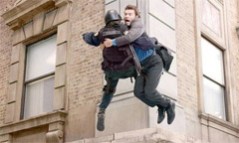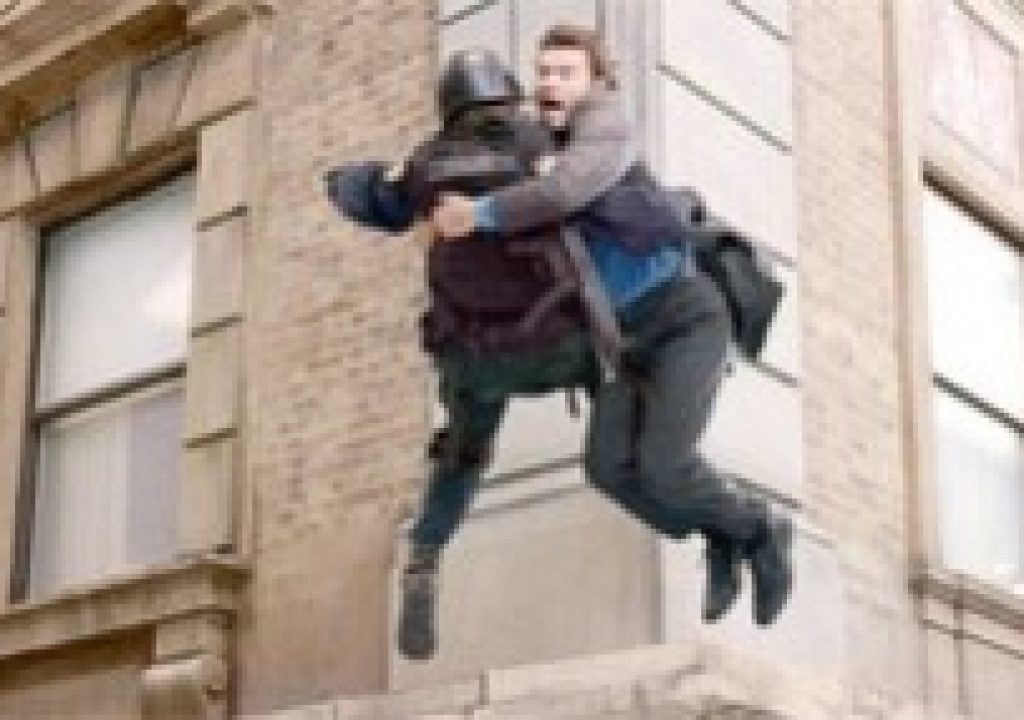The script for Man on a Ledge called for protagonist Nick Cassidy (Sam Worthington) to spend the bulk of the tale perched 21 stories above a Manhattan intersection. An escaped convict trying to prove his innocence, Nick captures the city’s attention and distracts authorities while his brother conducts a daring heist across the street. Visual Effects Supervisor Richard Kidd had the responsibility of maintaining suspense throughout this thriller that was literally shot high in the air.

The initial concept for VFX in Man on a Ledge was limited. “We approached it as an in-camera movie,” says Kidd. “They didn’t really want to spend money on visual effects, so they tried to design it in a way that they didn’t have to do many at all. But of course in the end, you always wind up with twice as many as they were hoping for. In this day and age, even a romantic comedy has 150 visual effects shots, between beauty cleanup work and sky replacement and little things here and there.”
Over four weekends in 2010, Worthington’s ledge scenes were filmed on what was actually the roof edge of the Roosevelt Hotel in New York. A physical set was slid behind Worthington to make it look like he climbed out of the window of a hotel room. But since this “skybox” only went up about ten feet, Kidd’s expertise was needed whenever Worthington was shot with an up angle. “We created CG set extensions to extend the Roosevelt to the movie roofline as opposed to the real roofline that exists if you were there in New York.”
While Worthington was truly performing on a ledge, safety harnesses and trussing kept the star safe. “We obviously had to paint out and replace all of that,” Kidd explains.
Kidd has been the visual effects supervisor on some of the biggest VFX-driven films of the past few years, including Twilight, Transformers and Spider-Man 3. He pioneered the use of effects such as digital water and virtual sets in Titanic, Castaway, The Matrix, and What Lies Beneath, drawing on his computer engineering degree to write code from scratch before today’s VFX tools existed.
In addition to the Roosevelt Hotel scenes, Kidd oversaw three VFX-heavy sequences in Man on a Ledge: the train crash, the S.W.A.T operation, and Nick’s dramatic jump.
For the train crash sequence, Kidd says “obviously we couldn’t have Sam or even a stunt double anywhere near the car when it’s getting hit, so what we had to do there was bridge a number of shots together to give the appearance that the car is racing toward the tracks as the train is racing down the tracks.” A digital car interior and digital POV move were created to represent Nick calculating his getaway across the tracks. The car’s approach and the train were shot separately, with the train traveling in reverse, or in some cases only five miles per hour and then sped up in post. “There was a lot of finessing involved,” says Kidd, “because as you speed things up, things get bumpier, and can end up looking like Keystone Cops.”
The entire train sequence blended shots of the cop cars in pursuit, the car moving with no train, the train with the still car on the tracks, and the train smashing into the car. Most of the work was done in compositing with Nuke and Shake, although some 3D touch up work was done with Maya and SideFX Houdini.
Executing Nick’s jump off the Roosevelt Hotel required previsualization to determine what shots would keep the audience on the edge of their seats while maintaining a realistic pace. The director, Asger Leth, was known for documentaries, and wanted the sequence to convey Nick’s peril, but with believable timing. Slow-motion was not an option. PreViz enabled the team to break down the sequence into eight shots that were filmed on the actual hotel roof, on a stunt wall, from scissor lifts, and on a green screen stage.
Even with all that planning, a need arose to create a fully CG shot of Nick’s falling POV, flying and spinning through the air until he hits the landing bag. “In this particular instance, it’s a pivotal part of the movie, everything’s been leading up to this,” says Kidd. And since the film hadn’t been planned to include intensive CG work, the team had to be smart on set about capturing all the information they could to be prepared for such eventualities.
The result is a VFX sequence that gives the audience a satisfying payoff to the story. Just like the street crowds craning their necks toward Nick, once Worthington goes out on that ledge, the audience wants to see him jump. Thanks to Kidd, the effect “doesn’t take us out of the movie but was executed in a way that’s very believable.”

